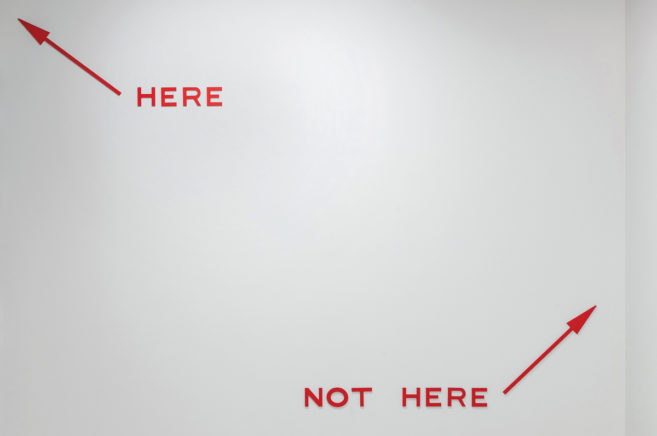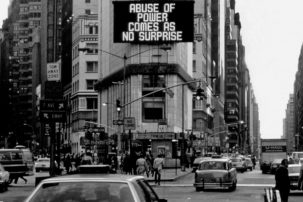Earlier this year, the UK’s Turner Prize dropped its age restriction, recognizing that “artists can experience a breakthrough in their work at any age.” Perhaps Canada’s Sobey Art Award should consider doing the same.
In Canada, the Sobey Art Award is, arguably, the most important prize for visual artists. With an annual pool of $110,000 distributed to the winner ($50,000), four finalists ($10,000 each), and the remaining 20 long-listed artists ($1,000 each) from five regions across the country, it is an incredibly generous initiative—and one that has grown in scope and significance, both nationally and internationally, since it was established in 2001.
Artists, curators, and the art world pay attention to the Sobey. But not only them. The prize raises the profile of contemporary visual art in Canada and is, categorically, good for artists and the visual arts sector. To me, it’s Canada’s equivalent of the Turner Prize. Nevertheless, there is always room for improvement and perhaps it’s time to reassess the criteria.
By prioritizing an upper age limit of 40—instead of applauding the best art in our country—is the Sobey Art Award, with a mandate to celebrate Canada’s “most exciting young artists,” in fact perpetuating ageism? What does “young” even mean anymore? In 2017, is an artist’s age a valid benchmark for judging their work? Or is age an old-fashioned, harmful, social construction that should be eliminated from our diets like trans fats and sugary drinks?
There’s little doubt that, early on in the history of the prize, the 40-and-under guideline helped to create a buzz around the award. It gave contemporary Canadian artists such as Brian Jungen (the very worthy first recipient in 2002) a space to shine. As noted on the Sobey’s website, “Given the lack of major contemporary art prizes in Canada at the time,” the award was created to “raise the prestige and profile of contemporary art and the work of younger Canadian artists.”
And the prize has been successful in regard to its initial intentions. In addition to raising the profile of Canadian art, many of the talented artists who have been long-listed, short-listed, or have won the prize over the years have received income via prize money and related exhibition fees. When artists get paid, it’s always a good thing.
But just as the terms of the Sobey have evolved over the last 15 years—going from biannual to annual, and increasing award monies for winners, finalists and longlisted aritsts—so too has the significance of the prize itself evolved. Now, in 2017, there are numerous high-profile awards for visual artists in the early stages of their careers: the BMO 1st! Art Award (explicitly for post-secondary, undergraduate visual arts students), the RBC Canadian Painting Competition, the Reveal Indigenous Art Awards (for emerging and established Indigenous artists), the Hnatyshyn Foundation – TD Bank Group Award for Emerging Visual Artist, the Hnatyshyn Emerging Atlantic Artist Residency, and others.
At this point, as a result, the Sobey Art Award has the voltage—and perhaps, the obligation—to shine the spotlight on Canada’s best visual artists, not just its younger ones.
Now, some may argue that there are plenty of other prizes out there already for artists who are mid-career and established (code for “middle-aged” and “old”), so the superannuated set should shut the front door, get back in the studio and finish eating their sour grapes.
And although there is no doubt about the importance of existing Canadian art prizes directed at mid-career and established artists—such as the Governor General’s Awards in Visual and Media Arts and the Hnatyshyn Foundation Visual Arts Award, both of which are fantastic—the intentions and objectives of these awards are very different than those of the Sobey.
The GGs are awarded to individuals who have had “remarkable careers” in the arts within a range of fields—from visual arts to media arts to architecture, fine craft, volunteer and professional arts administration. At $25,000 each, the GGs are, in effect, significant lifetime achievement awards. Likewise, the Hnatyshyn Foundation Visual Arts Award of $25,000 defines mid-career through merit, not age. In reality, an artist of any age can be in the middle of their career. Neither of these awards (unlike the Sobey) defines eligibility by date of birth.
So far, the UK’s Turner Prize has had success with the removal of its age limit. And it had history to answer for here, too: Established in 1984, the Turner Prize actually introduced its age limit of 50 in 1991. But this year, in a reversal of that decision, they removed it, making Lubaina Himid, at 63, the oldest nominee of the prize to date. (“Older artists, better show,” says the Financial Times of the current Turner Prize exhibition.)
Like the Sobey, the Turner Prize has gone through other significant changes since it started. In 1984, the Turner was open to anyone in the arts—gallery directors and curators, as well as artists, were eligible. It was named after J.M.W. Turner “as a figure who had been innovative and controversial” but had “gone on to be seen as one of the greatest British artists.” And true to its namesake, the Turner Prize has raised the level of public discourse around contemporary art through controversy and other means. It has also adjusted its focus with the times, and the Sobey should too.
Interestingly, it’s not only the Turner Prize administrators who are finding older artists interesting these days. In “Bodies in Translation: Age and Creativity,” currently on at Mount Saint Vincent University in Halifax, curators Ingrid Jenkner, Lindsay Fisher and Eliza Chandler “address various facets of aging, including age-related disability.” Earlier this year, Artsy explained “Why Old Women Have Replaced Young Men as the Art World’s Darlings.” Even artist Petra Collins, who made her name in documenting the lives of young women like herself, has turned in more recent work to examining the bodies of her aging parents.
Whether “old” is really the new “new” is a difficult notion to prove. However, one thing is for certain: in 2017, it feels weird to have a “best before” date applied to artists.
The idea that an art career—or any career—is delimited by age is also disproven by social trends. We are in an age of life-long learning and neuroplasticity. Canadian universities are filling up with oldsters. Mature students are seeking higher education as a path to upgrading their career opportunities or simply re-inventing themselves.
Furthermore, it’s worth noting that artists affected by intersectional oppressions—such as women of colour—may not have the opportunity to start art careers at a young age, and, even when they do, are often not fully recognized for their talents until later in life.
Let the Sobey Art Award continue to celebrate “some of our country’s most exciting” artists. But let’s rethink what age those artists might be.
Ingrid Mary Percy is a visual artist and associate professor in the Visual Arts Program at the Grenfell Campus of Memorial University. She is also a PhD student in the Faculty of Education at the University of Victoria.

 The UK’s Turner Prize removed its 50-and-under age limit this year, making possible the nomination of Lubaina Himid and Hurvin Anderson (at left) alongside Andrea Büttner and Rosalind Nashashibi (at right). Should Canada’s Sobey Art Award consider removing its age limit too? Photo: Via Hull Museums Facebook page.
The UK’s Turner Prize removed its 50-and-under age limit this year, making possible the nomination of Lubaina Himid and Hurvin Anderson (at left) alongside Andrea Büttner and Rosalind Nashashibi (at right). Should Canada’s Sobey Art Award consider removing its age limit too? Photo: Via Hull Museums Facebook page.







